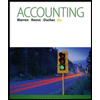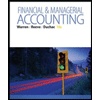
Property, Plant, and Equipment:
Property, Plant, and Equipment refers to the fixed assets, having a useful life of more than a year that is acquired by a company to be used in its business activities, for generating revenue.
To Prepare: Journal entries for each of the given transactions.
Explanation of Solution
1.
| Date | Account Title and Explanation | Post Ref. |
Debit ($) |
Credit ($) |
| Land | 62,500 | |||
| Building | 37,500 | |||
| Cash | 100,000 | |||
| (To record the acquisition costs of land and building.) |
Table (1)
- Land is an asset account, and it is increased by $62,500. Therefore, debit Land account with $62,500.
- Building is an asset account, and it is increased by $37,500. Therefore, debit Land account with $37,500.
- Cash is an asset account, and it is decreased by $100,000. Therefore, credit Cash account with $100,000.
Working note
Determine the initial value of land and building.
Cash paid for the property is $100,000.
| Asset | Fair value ($) | Percent of Total fair value (%) |
Initial valuation ($) |
| Land | 75,000 | 62.5% | 62,500 |
| Building | 45,000 | 37.5% | 37,500 |
| Total | 120,000 | 100.0% | 100,000 |
Table (2)
2.
Journal entry to record the acquisition of equipment on note:
| Date | Account Title and Explanation | Post Ref. |
Debit ($) |
Credit ($) |
| Equipment | 37,037 | |||
| Discount on note payable | 2,963 | |||
| Note payable | 40,000 | |||
| (To record the acquisition of equipment.) |
Table (3)
- Equipment is an asset account,and it is increased by $37,037. Therefore, debit Equipment account with $37,037.
- Discount on note payable is a contra liability account,and increased by $2,963. Hence, debit the Discount on note payable account with $2,963.
- Note Payable is a liability account, and is increased by $40,000. Therefore, credit the Note payable account with $40,000.
Working note:
Determine the present value of note payments.
Note: PV factor (Present value of $1: n = 1, i =8%) is taken from the table value (Table 2 in Appendix from textbook).
Determine the discount on note payable.
3.
To Prepare: The journal entry to record the acquisition of a truck by donation.
Solution:
Journal entry to record the acquisition of a truck by donation:
| Date | Account Title and Explanation | Post Ref. |
Debit ($) |
Credit ($) |
| Truck | 2,500 | |||
| Revenue – donation of asset | 2,500 | |||
| (To record the acquisition cost of a truck by donation.) |
Table (4)
- Truck is an asset account,and it is increased by $2,500. Therefore, debit Truck account with $2,500.
- Revenue – Donation of asset is a component of equity, and increased by $2,500. Therefore, credit Revenue – Donation of asset account with $2,500.
4.
Journal entry to record the capitalization of organization costs:
| Date | Account Title and Explanation | Post Ref. |
Debit ($) |
Credit ($) |
| Organization cost expense | 3,000 | |||
| Cash | 3,000 | |||
| (To record the organization cost expense.) |
Table (5)
- Organization cost expense is an expense account. Expenses and losses reduce Equity value. Therefore, debit Organization cost expense with $3,000.
- Cash is an asset account. The amount has decreased because cash is paid for the expenditures incurred. Therefore, credit Cash account with $3,000.
5.
Journal entry to record the purchase of equipment:
| Date | Account Title and Explanation | Post Ref. |
Debit ($) |
Credit ($) |
| Maintenance Equipment | 15,500 | |||
| Cash | 15,500 | |||
| (To record the purchase of equipment.) |
Table (6)
- Equipment is an asset account, and it is increased by $15,500. Therefore, debit Equipment account with $15,500.
- Cash is an asset account, and it is decreased by $15,500. Therefore, credit Cash account with $15,500.
Working note:
Determine the value of equipment.
6.
Journal entry to record the acquisition of office equipment in exchange of common stock:
| Date | Account Title and Explanation | Post Ref. |
Debit ($) |
Credit ($) |
| Office Equipment | 5,500 | |||
| Common stock | 5,500 | |||
| (To record the acquisition costs of office equipment in exchange of common stock.) |
Table (7)
- Office equipment is an asset account, and it is increased by $5,500. Therefore, debit Office equipment account with $5,500.
- Common stock is a component of equity and it is increased by $5,500. Therefore, credit common stock account with $5,500.
7.
Journal entry to record the acquisition of land in exchange cash and note payable:
| Date | Account Title and Explanation | Post Ref. |
Debit ($) |
Credit ($) |
| Land | 20,000 | |||
| Cash | 2,000 | |||
| Note payable | 18,000 | |||
| (To record the acquisition costs of land in exchange of cash and note payable.) |
Table (8)
- Land is an asset account, and it is increased by $20,000. Therefore, debit Land account with $20,000.
- Cash is an asset account, and it is decreased by $2,000. Therefore, credit Cash account with $2,000
- Note Payable is a liability account, and is increased by $18,000. Therefore, credit the Note payable account with $18,000.
Working note
Determine the amount of note payable.
Want to see more full solutions like this?
Chapter 10 Solutions
INTERMEDIATE ACCOUNTING, W/CONNECT
- Please fill all cells! I need helparrow_forwardHilary owns a fruit smoothie shop at the local mall. Each smoothie requires 1/2 pound of mixed berries, which are expected to cost $5.50 per pound during the summer months. Shop employees are paid $7.00 per hour. Variable overhead consists of utilities and supplies, with a variable overhead rate of $0.12 per minute of direct labor time. Each smoothie should require 4 minutes of direct labor time. Determine the following standard costs per smoothie: Direct materials cost Direct labor cost Variable overhead costarrow_forwardgeneral accountingarrow_forward
- The following financial information is provided for Brightstar Corp.: Net Income (2023): $500 million Total Assets on January 1, 2023: $3,500 million Total Assets on December 31, 2023: $4,500 million What is Brightstar Corp. _ s return on assets (ROA) for 2023? A. 11.80% B. 12.50% C. 13.20% D. 14.00%arrow_forwardPLEASE FILL ALL CELLS. ALL RED CELLS ARE INCORRECT OR EMPTY.arrow_forwardAssume Bright Cleaning Service had a net income of $300 for the year. The company's beginning total assets were $4,500, and ending total assets were $4,100. Calculate Bright Cleaning Service's Return on Assets (ROA). A. 6.50% B. 7.25% C. 6.98% D. 5.80%arrow_forward
- what is the investment turnover?arrow_forwardA California-based company had a raw materials inventory of $135,000 on December 31, 2022, and $115,000 on December 31, 2023. During 2023, the company purchased $160,000 worth of raw materials, incurred direct labor costs of $230,000, and manufacturing overhead costs of $340,000. What is the total manufacturing cost incurred by the company? A. $720,000 B. $750,000 C. $705,000 D. $735,000arrow_forwardPLEASE HELP WITH THIS PROBLEM. ALL RED CELLS ARE EMPTY OR INCORRECT.arrow_forward
- Suppose during 2023, BlueStar Shipping reported the following financial information (in millions): Net Sales: $40,000 Net Income: $150 Total Assets at Beginning of Year: $26,000 • Total Assets at End of Year: $24,800 Calculate the following: (a) Asset Turnover (b) Return on Assets (ROA) as a percentagearrow_forwardprovide correct answer accounting questionarrow_forwardKubin Company’s relevant range of production is 11,000 to 14,000 units. When it produces and sells 12,500 units, its average costs per unit are as follows: Average Cost per Unit Direct materials $ 7.20 Direct labor $ 4.20 Variable manufacturing overhead $ 1.70 Fixed manufacturing overhead $ 5.20 Fixed selling expense $ 3.70 Fixed administrative expense $ 2.70 Sales commissions $ 1.20 Variable administrative expense $ 0.70 Required: For financial accounting purposes, what is the total product cost incurred to make 12,500 units? For financial accounting purposes, what is the total period cost incurred to sell 12,500 units? For financial accounting purposes, what is the total product cost incurred to make 14,000 units? For financial accounting purposes, what is the total period cost incurred to sell 11,000 units?arrow_forward
 Intermediate Accounting: Reporting And AnalysisAccountingISBN:9781337788281Author:James M. Wahlen, Jefferson P. Jones, Donald PagachPublisher:Cengage Learning
Intermediate Accounting: Reporting And AnalysisAccountingISBN:9781337788281Author:James M. Wahlen, Jefferson P. Jones, Donald PagachPublisher:Cengage Learning Accounting (Text Only)AccountingISBN:9781285743615Author:Carl Warren, James M. Reeve, Jonathan DuchacPublisher:Cengage Learning
Accounting (Text Only)AccountingISBN:9781285743615Author:Carl Warren, James M. Reeve, Jonathan DuchacPublisher:Cengage Learning Financial & Managerial AccountingAccountingISBN:9781285866307Author:Carl Warren, James M. Reeve, Jonathan DuchacPublisher:Cengage Learning
Financial & Managerial AccountingAccountingISBN:9781285866307Author:Carl Warren, James M. Reeve, Jonathan DuchacPublisher:Cengage Learning Financial Accounting: The Impact on Decision Make...AccountingISBN:9781305654174Author:Gary A. Porter, Curtis L. NortonPublisher:Cengage Learning
Financial Accounting: The Impact on Decision Make...AccountingISBN:9781305654174Author:Gary A. Porter, Curtis L. NortonPublisher:Cengage Learning College Accounting, Chapters 1-27AccountingISBN:9781337794756Author:HEINTZ, James A.Publisher:Cengage Learning,
College Accounting, Chapters 1-27AccountingISBN:9781337794756Author:HEINTZ, James A.Publisher:Cengage Learning,




